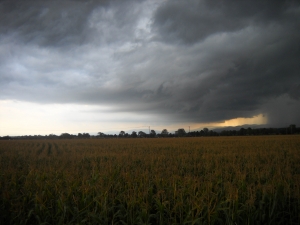
Having come out of the storm of the 2008 economic crisis relatively unscathed, Canada needs to prepare for the looming retirement funding tempest.
That’s according to George Lewis, group head, RBC Wealth Management, and chairman and portfolio manager, RBC Global Asset Management. He spoke at an event hosted by the Economic Club in Toronto on Thursday.
“We have a relatively robust savings and retirement regime, we’ve been ahead of the curve in retirement planning for nearly two decades and we have identified and filled many gaps in our retirement system,” said Lewis. “But our work is not done and we need to shore up our defences and complete this project before this new storm fully arrives.”
The problem is that participation rates in saving strategies are decreasing while the cost of government support programs is on the rise. Old age security (OAS) is the largest cyclical expenditure for the government, said Lewis, and will increase to $142 billion in 2036 from $36 billion a year today. Similarly, while many Canadians know they need to save for retirement, fewer are doing so. According to the Office of the Chief Actuary, the number of Canadians contributing to RRSPs had declined from 29% in 2000 to 24% in 2010.
As well, fewer Canadians are accessing workplace registered pension plans (RPP). Citing the Institute of Canadian Actuaries, Lewis said the number of Canadians with RPPs declined to 32% in 2010 from 41% in 1991. In the private sector that number is even less, and in 2010 only 24% of workers had an RPP.
PRPPs will help
This decline in pension plans can be counteracted through the introduction of pooled registered pension plans (PRPP), said Lewis. Employees enrolled in a PRPP will have contributions automatically deducted from their pay at a default contribution rate assigned by the financial institution administering the plan. This simple contribution system, according to Lewis, is one of the advantages PRPPs have over RRSPs.
“The decision to save for retirement needs to be simplified by providing workplace plans that are portable, low cost, easy to manage and, most importantly, make saving the favourite option,” he said, “and PRPPs deliver on this strategic imperative.”
Implementing PRPPs properly, however, will require three things: low-cost regulation, a nationally harmonized legislation and regulatory regime and the support of employers and employees.
Lewis said that while all aspects of retirement savings are important, from OAS to RPPs and RRSPs, now is the time for employers to work with the federal government and financial industry to encourage the province to enact enabling legislation for PRPPs.
“The immediate opportunity is for all of us to get together as partners in building our retirement system,” he said, “through the introduction and implementation of PRPPs as the single most important addition and solution to Canada’s retirement savings shortfall.”